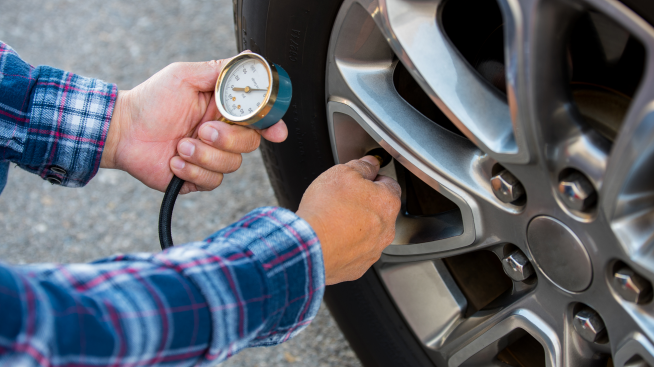What to know about your car’s temperature gauge

Your car is a marvelous machine, generating impressive amounts of power to drive you forward. All this hard work generates a lot of heat — it is a combustion engine, after all. Though your engine was designed to withstand the heat, overheating is still possible and can cause some damage. That’s why your car’s dashboard includes an engine temperature gauge and/or a warning light to help you monitor the engine’s temperature and notify you when the temperature is out of the safe range. But what else should you know about your car’s temperature gauge? Let’s dive in.
What does your car engine temperature gauge do?
If your engine overheats for too long, or too often, it could potentially break down — and repairing or replacing an engine isn’t cheap. Not only that, but an overheated engine can also warp or crack other vital parts of your car. Although an overheated engine can be dangerous, it can also be preventable. Experts tend to agree the optimal engine temperature is around 190 to 225 degrees Fahrenheit. Most cars, however, don’t provide numerical temperature readings. Instead, they show a hot-cold scale with a needle that sits around the middle.
How to read your car engine temperature gauge
If the needle in your car’s gauge doesn’t sit dead center, this is common. Every vehicle is different, and optimal temperature ranges may vary. The reading is affected by factors like the weather, using the heating, ventilation and air conditioning (HVAC) system or taxing the engine by towing heavy loads. You’ll probably notice your needle stays within a middle range that accounts for these smaller, day-to-day fluctuations.
Reasons your gauge fluctuates:
If your temperature gauge is inching above its typical day-to-day range, there could be a few reasons. The first and most obvious is that your engine has a serious problem and really is starting to overheat. How to deal with this will be discussed in more detail later.
Another explanation for higher temperature readings might be coolant loss, possibly due to a leak. Adding coolant to your radiator, or having your mechanic do it, may address the problem. Other reasons for temperature increases include a broken water gasket, a malfunctioning coolant valve, a broken fan or fan belt, and other problems. Finally, there's a chance your gauge is simply broken. Temperature gauges get old, and while they're usually quite reliable, they're also fallible. Yours might just need replacing.
How long does it take for a car engine to cool down?
If your engine really is overheating, there are a few things you can try to avoid serious damage to your car. First, turn off the air conditioning and roll down the windows. If that doesn’t help, turn on the heater, since car heaters typically work by redirecting engine heat into the cabin.
If all else fails, pull over as soon as it's safe to do so and stop the engine. It’s a best practice to call for professional assistance and wait until your temperature gauge is in the normal range. How quickly that happens depends on several things, including ambient temperature. If you’ve broken down in the midday heat of an Arizona summer, it may take some time.
How long should you let your car warm up?
Many drivers have probably heard that the engine needs a few minutes to warm up, especially in the winter. While cars tend to need a little time to warm up, most modern engines may need less than a minute to come to temperature. Warming up the engine for several minutes was necessary with older cars because the cold, winter air could ruin the engine’s fuel-to-air ratio.
In summary
As a responsible car owner, it helps to pay regular attention to your car temperature gauge. It doesn’t just provide vital information about your engine — it can help keep it running well for a long time. You can also check out our car maintenance checklist to learn more about car care.



